Research Trip 2017 - The Maritime Museum of Tasmania and the Lady Nelson
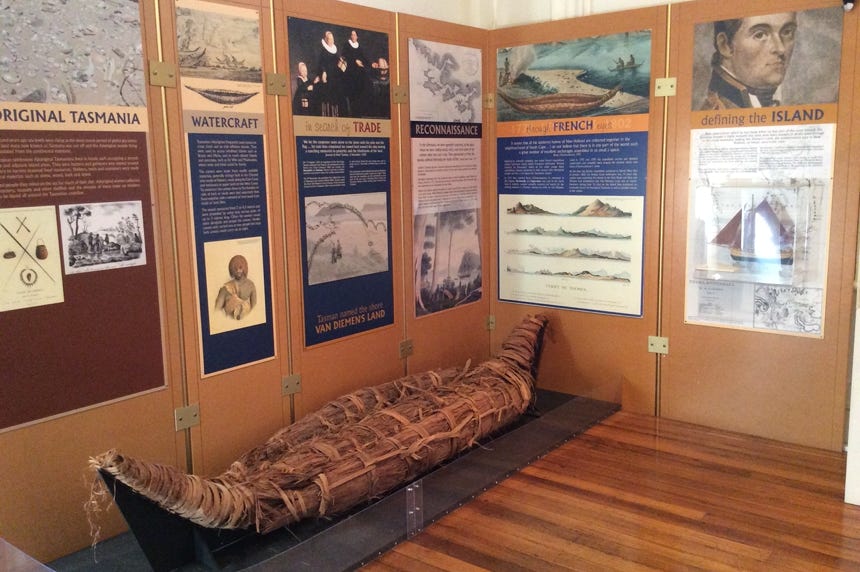
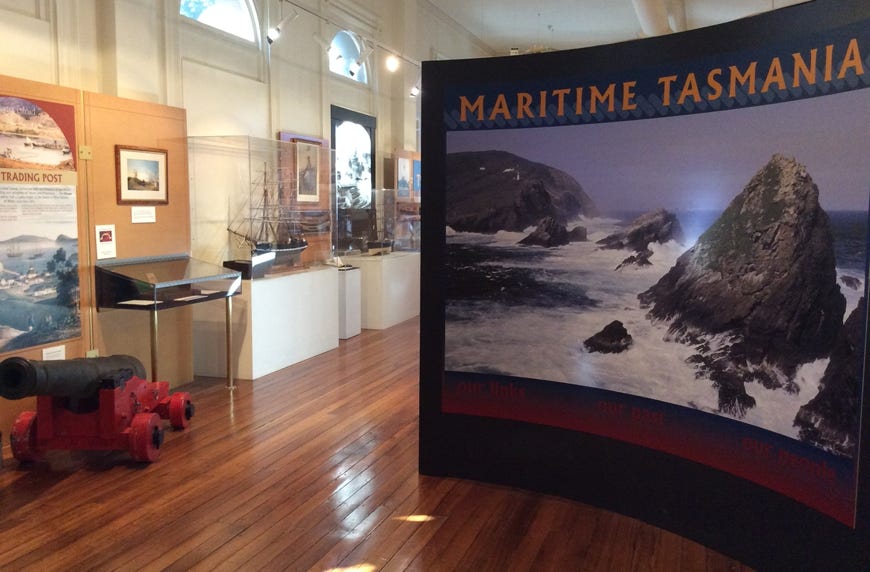
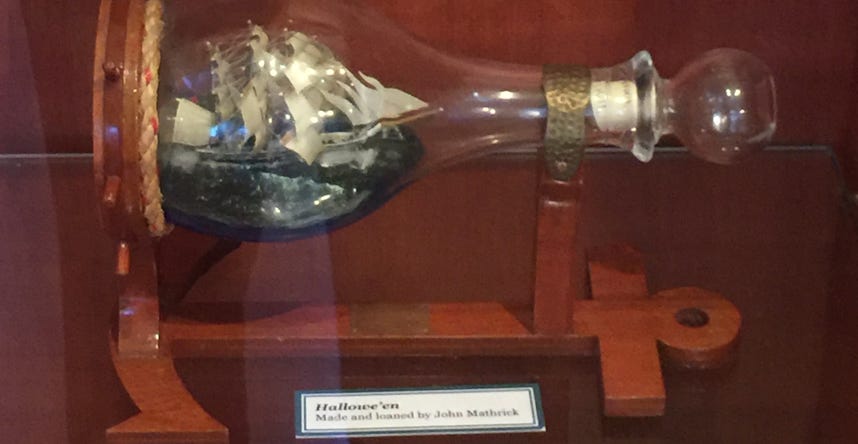
The first place I visited in Hobart was the Maritime Museum of Tasmania. There is so much to view in their collection! Rob and I did the circuit of the displays several times trying to soak it all in. There was a staggering number of models of ships to be seen. Some of the models were in bottles. The first model of a tall ship that I ever saw had been displayed like that. - What an amazing skill!
It was very hard to absorb the fact that I was only a stone’s throw from Hunter Island. In February 1804 my 4th great grandparents, Thomas and Mary ‘Ann’ Peters, had come ashore there. Their eighteen month old daughter Elizabeth was with them, and Ann was a couple of months pregnant. She was one of the sixteen wives of convicts among the party of 433 who came ashore. On arrival some of the thick undergrowth had to be cleared before the tents could be erected among the tall gum trees.
One of the most impressive displays in the Maritime Museum lay immediately inside the doorway. It was an example of the bound bark and reed canoes of Aboriginal people of Tasmania. Two days later we saw a similar canoe on display in the ningina tunapri exhibition at the Tasmanian Museum and Art Gallery. The canoes were used all over Tasmania and not just for short trips on calm waters. Amazingly they were used for trips as far out as Maatsuyker Island and Eddystone Rock.
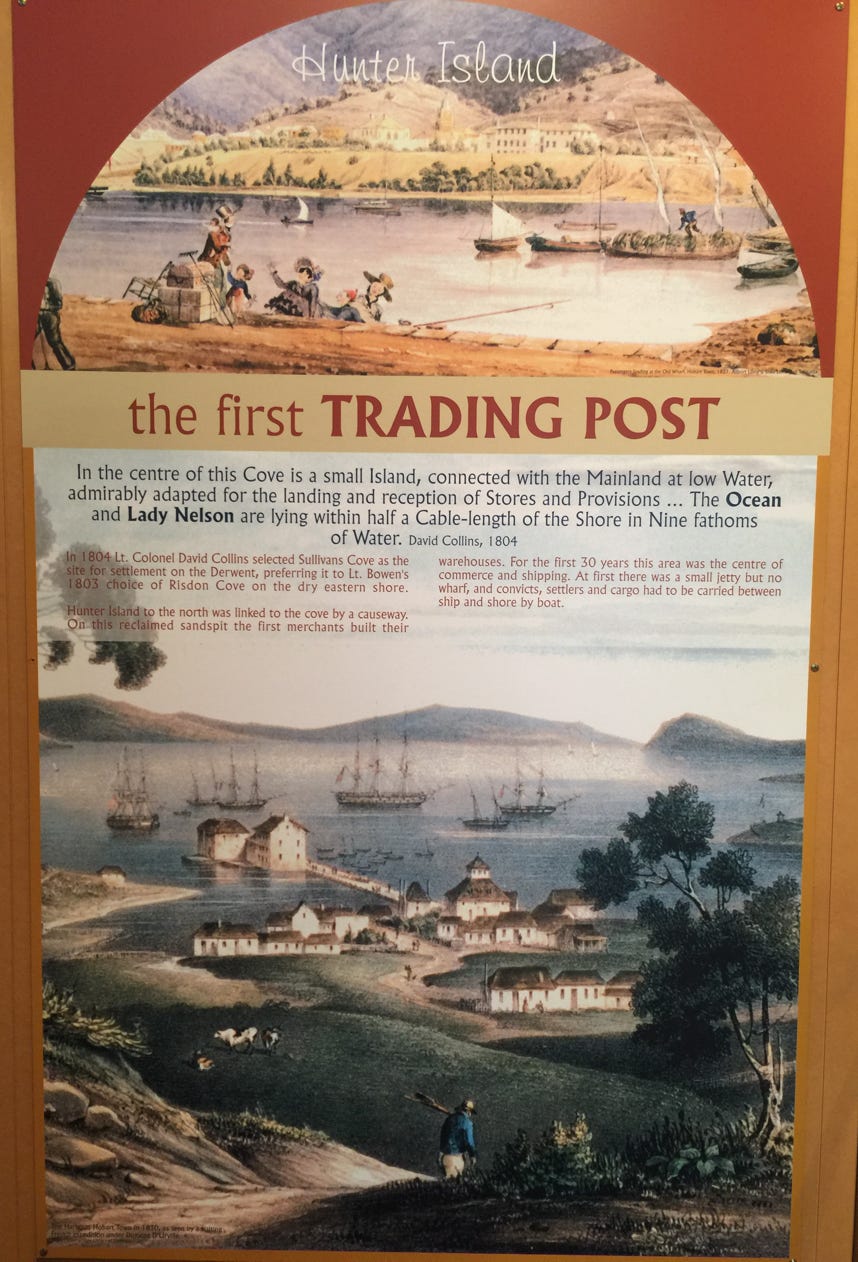
“Access to the Stores on Hunters Island was only via a tidal sandbar that linked this small lump of rock with the shore, which was half the time under water. …More than 65,000 convicts took their first steps into the penal colony at Old Wharf, jostling for room with whalers, seamen and merchants as they were marched in chains to their barracks in the town centre.” http://www.visithobartaustralia.com.au/hunter-isld.html
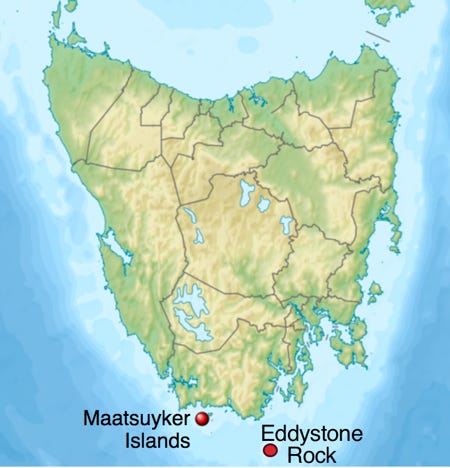
https://en.wikipedia.org/wiki/Badger_Island
“There were accounts by the French of Aboriginal people in canoes, which they called Pirogues, up to 20 km off the southern end of Tasmania to explore the outer islands and rocks for food. At least one was reported to be 7-8 metres in length – the length of the whale boats used by whalers and sealers at that time.” http://rexgreeno.blogspot.com.au/p/conference-paper-nawi-exploring.html
“The seas around the Maatsuyker Group take the full brunt of the southern gales and are dangerous even for modern craft. The voyages to these islands – says archaeologist Rhys Jones - must rank high in the maritime achievements of any hunting and gathering society.”
https://australianmuseum.net.au/blogpost/science/boat-people-wouraddy-and-maritime-tasmanians
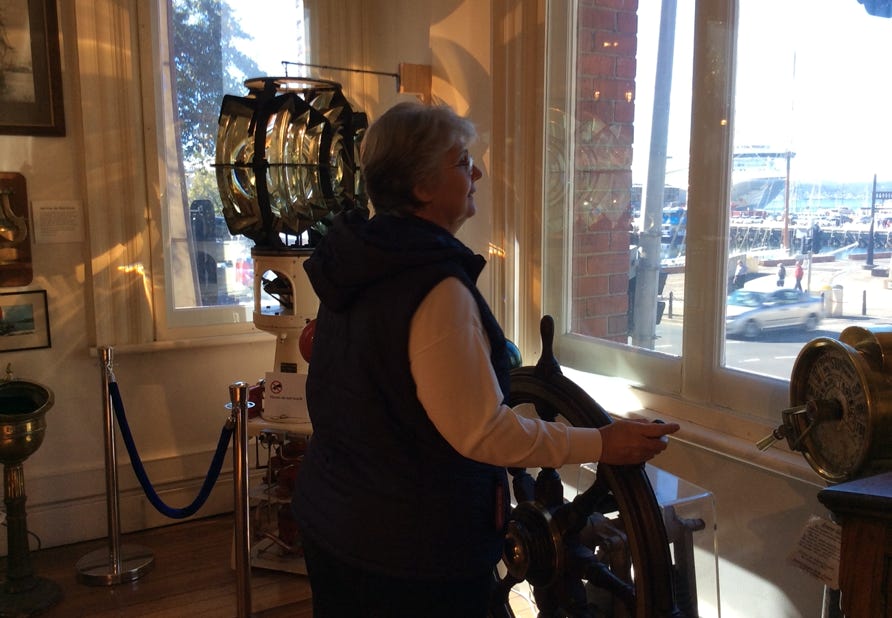
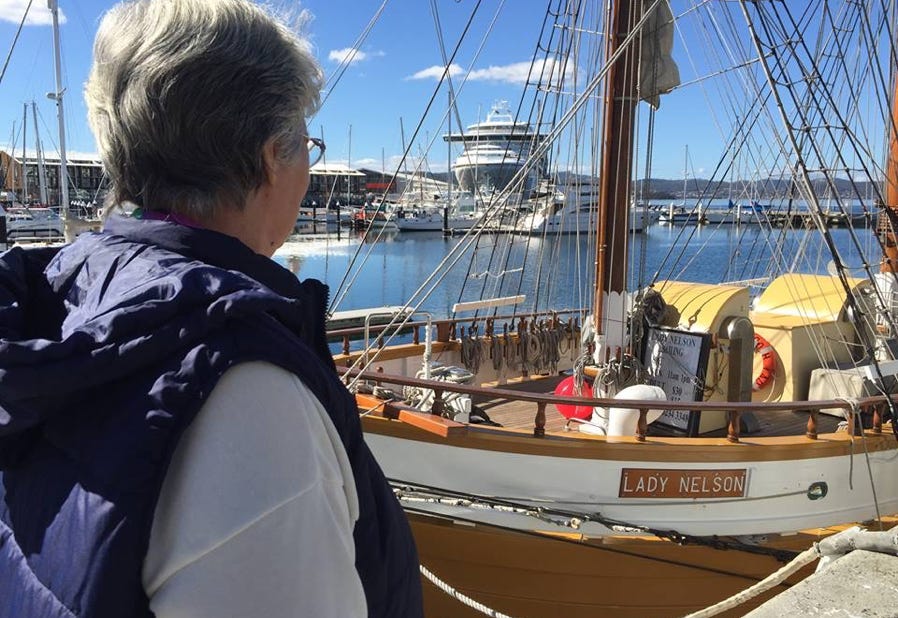
RESEARCH Part A.
- RESEARCH - Questions and Inspiration.
- RESEARCH - My curiosity & my many collections.
- RESEARCH - Religion, Politics and the Great Pumpkin
- RESEARCH - The Orange and The Green.
- RESEARCH - Why did they leave? Where did they go?
- RESEARCH - Acknowledgement of Traditional Owners.
- RESEARCH - Stewart and Doody - a puzzling pair.
- RESEARCH - Maps Charts and Trees.
- RESEARCH - Snippets from here and there, and a red herring Z.
- RESEARCH -The 1990 Frazer Reunion, and how we got our Z.
- RESEARCH - Searching for Ships.
- RESEARCH - It’s time to forget about it, or to ‘go it alone’.
- RESEARCH - What, no Glenfiddich or Tullamore Dew?
- RESEARCH - Questions remain: Why did they leave? Was Holt his name?
- RESEARCH TRIP 2016 - They struck out from Sydney.
- RESEARCH TRIP 2016 - He married a Marks.
- RESEARCH TRIP 2016 - They moved on again.
- RESEARCH TRIP 2016 - The Grant/Gorman family of Harden-Murrumburrah
- RESEARCH - Acknowledgement of Traditional Owners.
- RESEARCH TRIP 2016 - An 1874 Tall Ship - The James Craig
- RESEARCH - Could I be right? What do you think?
- RESEARCH TRIP 2017 - The Maritime Museum of Tasmania and the Lady Nelson
- RESEARCH TRIP 2017 - Hobart: A Monument, Land Grants, and Maps.
- RESEARCH TRIP 2017 - Hobart: St David’s Park
- RESEARCH TRIP 2017 - Hobart to York Plains, Home to the Holt and Peters families
- RESEARCH TRIP 2017 - Heading home with questions and a task or two.
- RESEARCH - Plan B - A public website.
- RESEARCH - Choose your own adventure

